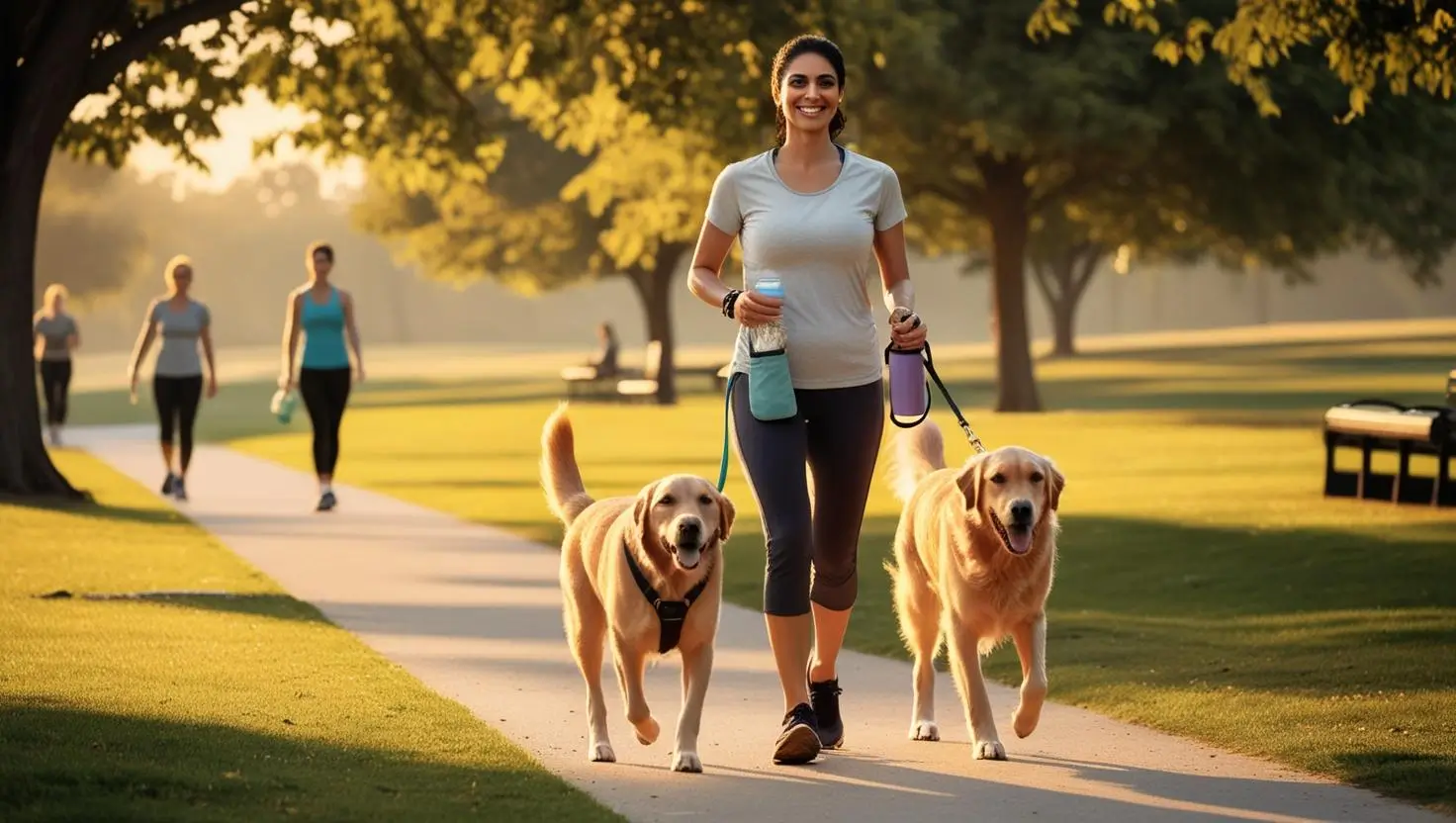Golden Retrievers are known for their loyalty, intelligence, and boundless energy. One of the simplest and most effective ways to keep your Golden happy and healthy is through regular walks. But how long should those walks be? What kind of routine is best?
In this article, you’ll discover how to build the perfect daily walking routine for your Golden Retriever, including duration, types of walks, mental stimulation, safety tips, and signs that your dog may need more (or less) activity.
Why Walking Is So Important for Golden Retrievers
Walking does more than help your dog “burn energy.” For Golden Retrievers, regular walks offer a wide range of benefits:
- Physical health: Prevents obesity and strengthens muscles and joints
- Mental stimulation: New smells, sights, and sounds keep their brain engaged
- Emotional well-being: Reduces anxiety and restlessness
- Behavioral balance: Dogs who get enough exercise are less likely to be destructive
Goldens are a sporting breed originally bred for hunting and retrieving, which means movement is in their DNA.
How Long Should You Walk a Golden Retriever?
Golden Retrievers need about 1 to 2 hours of exercise per day. This can be divided into multiple walks or combined with other activities like play or training.
Puppies (Under 1 Year):
- Follow the 5-minute rule: 5 minutes of walking per month of age (e.g., 4-month-old = 20-minute walk)
- Focus on short, positive experiences
- Avoid excessive impact to protect growing joints
Adults (1–7 Years):
- 60 to 90 minutes per day
- Can be split into 2 or 3 walks
- Combine on-leash walking with off-leash play if safe
Seniors (8+ Years):
- Adjust walks to your dog’s mobility and energy level
- Focus on low-impact walks and mental stimulation
- Aim for 30 to 60 minutes daily in shorter sessions
Building the Perfect Daily Walk Routine
Here’s how a typical day might look for an adult Golden Retriever:
Morning Walk (20–30 minutes)
- Ideal for bathroom break, light exercise, and setting the tone for the day
- Keep it brisk but not intense
- Add training practice like “heel” or “stay”
Midday Walk or Play (15–30 minutes)
- Great for dogs with separation anxiety or boredom
- A fetch session in the yard can replace this if needed
- Use puzzle toys if you’re at work
Evening Walk (30–45 minutes)
- The main walk of the day
- Let them sniff, explore, and stretch their legs
- Include socialization or off-leash time if available
Tips for Making Walks More Fun and Engaging
Golden Retrievers are smart and get bored with the same routine. Keep things interesting:
Vary the Route
Change your walking path every few days to offer new smells and sights.
Let Them Sniff
Don’t rush your dog. Sniffing is like reading the news—it’s mentally enriching.
Bring Toys or a Ball
Stop midway for a short game of fetch or tug.
Use a Dog Backpack
For high-energy dogs, a small weighted pack adds extra challenge (consult your vet first).
Train on the Go
Use walks to reinforce obedience commands like sit, down, or stay.
Safety First: Protecting Your Golden on Walks
Golden Retrievers are generally easygoing, but it’s important to keep safety top of mind.
Leash and Collar
Use a sturdy 6-foot leash and a flat collar or no-pull harness. Avoid retractable leashes—they offer less control.
Watch for Hazards
Avoid:
- Hot pavement (test with your hand)
- Ice or salt in winter
- Ticks and burrs in tall grass
Hydration
Bring water if walking more than 30 minutes or in hot weather.
Night Walking Gear
If walking at dawn or dusk, use reflective gear or a light-up collar.
Signs Your Golden Needs More Walks
Your dog may need longer or more frequent walks if you notice:
- Restlessness at home
- Destructive behavior (chewing furniture, digging)
- Excessive barking or whining
- Gaining weight despite normal meals
Signs You’re Overdoing It
Too much exercise—especially for puppies and seniors—can be harmful.
Watch for:
- Limping or stiffness
- Panting long after the walk
- Laying down mid-walk
- Reluctance to go outside
If this happens, adjust the routine and consult your vet.
Alternatives to Traditional Walks
Don’t have time for three walks a day? That’s okay—mix things up!
- Fetch sessions in the yard
- Swimming (low impact and Goldens love water!)
- Treadmill walks (train them slowly with treats)
- Doggy daycare for supervised play
The goal is regular movement and engagement, no matter the method.
Walks That Work for You and Your Dog
Golden Retrievers don’t just need exercise—they crave companionship and stimulation. A daily walk routine that includes variety, fun, and structure not only keeps your dog healthy, but also builds a deep and rewarding bond.
With a little planning and creativity, your walks can become the best part of both your days. 🐾🚶♂️💛

